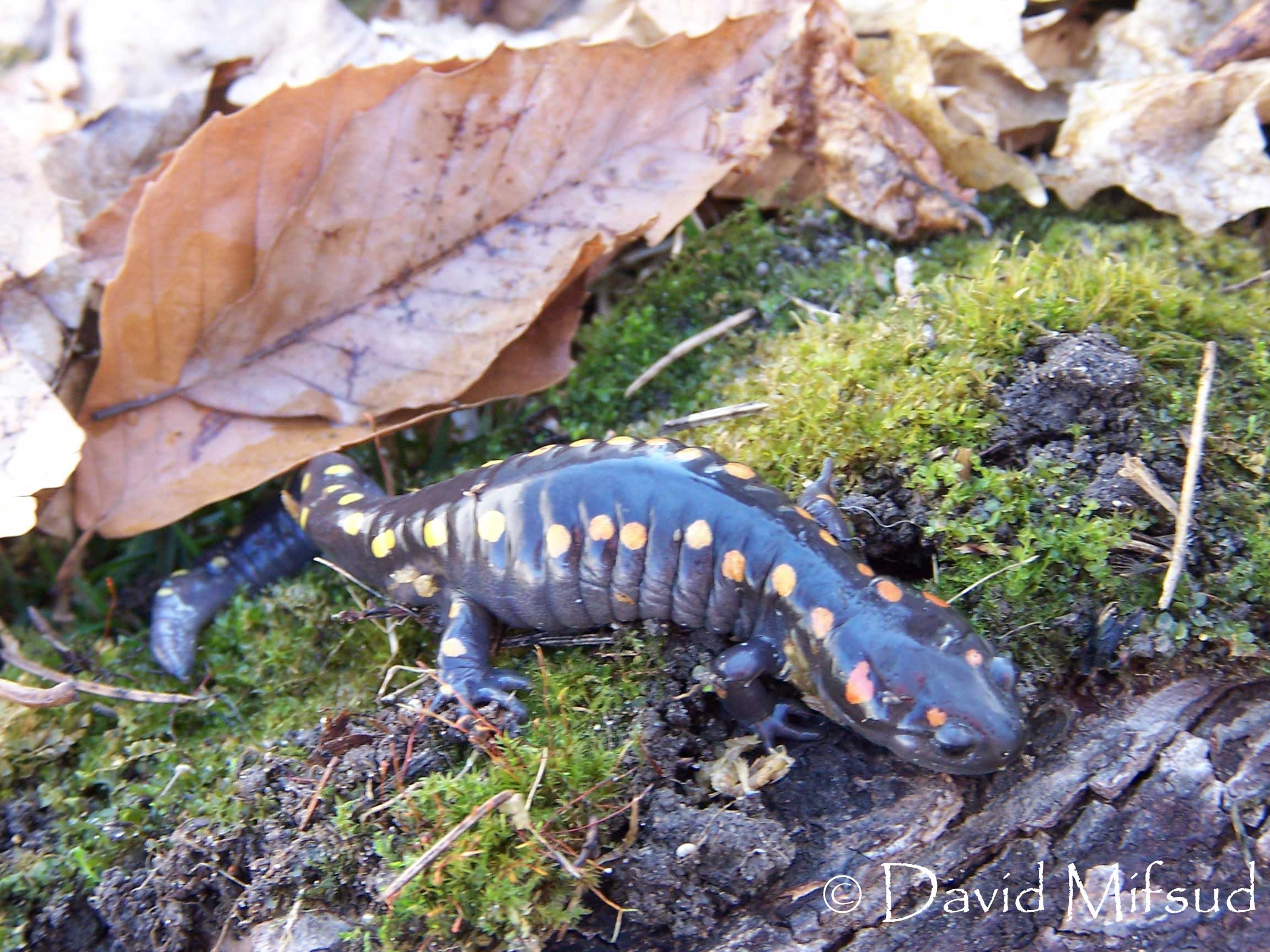
Ambystoma maculatum
Natural History
This brightly colored salamander can be locally abundant where forested habitat remains intact. It quickly declines or disappears when woodlands are cleared or disturbed by cutting or invasive species. Moist, closed canopy woodlands are preferred habitat. They tend to avoid swamp forests subject to flooding. They are also absent in disturbed forests that have been recently grazed, burned, or harvested for timber. Temporary or semi-permanent ponds either within or near to the woods are key for their habitat. Spotted Salamanders spend most of their time in burrows underground – up to four feet below the surface. They are sometimes found under or within rotting logs, leaf litter, and other moist places. Hibernation occurs on land, most often near breeding ponds. They have granular glands that produce secretions which can repel some predators. Most glands are behind the eyes and on the tail.
Reproduction and Growth
Migration to breeding ponds occurs in late May to mid-April. Migration is triggered by thawing of the ground and higher humidity. This species returns to the same breeding ponds each year, and uses the same routes when traveling to and from breeding ponds. They even enter and leave ponds at same point each time. Eggs are laid one to several days after sperm transfer. The female can lay 50-300 eggs in one large mass or several smaller clusters attached to sticks or vegetation. Egg masses form a symbiotic relationship with some types of algae. Algae provide larvae with extra oxygen, while benefiting from carbon dioxide released by embryos.
Eggs hatch in 20-60 days and metamorphose in 60-90 days, although some larvae may over-winter. Females reach sexual maturity at 3-5 years old, while males reach maturity at 2-3 years old. They may live more than 20 years.
Conservation
Their future depends on presence of undisturbed woodlands near temporary and semi-permanent ponds. Any human activity that opens forest canopies (i.e. elective logging) can lower humidity, creating unsuitable conditions. Construction of roads running between wooded uplands and lowland breeding sites can lead to mass mortality of migratory salamanders. Sometimes they are collected for research and the pet trade, which could lessen the number in the wild. Acidic rain and snow is also a concern as eggs and larvae may be sensitive to ponds becoming more acidic.
Habitat Type
- Ephemeral wetlands
- Permanent wetlands
- Forests
